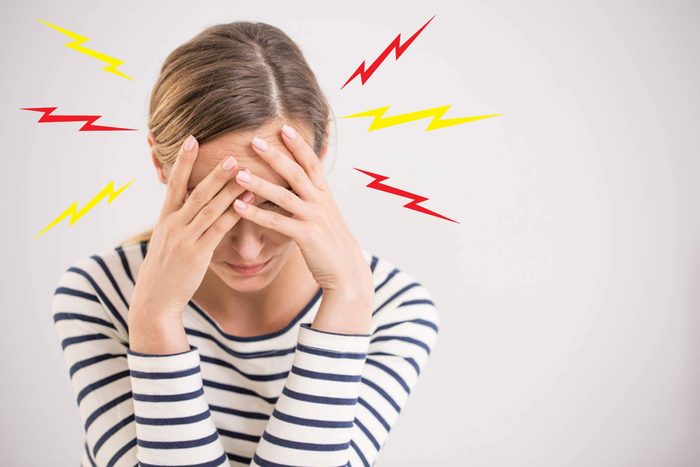
A migraine is more than a bad headache
We’ve all been sidelined at some point by a tension headache, but only about 12 percent of Americans get migraines, says the National Center for Complementary and Integrative Health. Thought to be at least partially genetic, migraines are an episodic headache that can involve severe, throbbing pain. “When we think of migraine, it’s the level of disability that really sets it apart from other headaches,” says Susan Hutchinson, MD, a Southern California headache specialist. “And it’s much more than just the headache. What comes with it is an extreme sensitivity to the environment and a resulting inability to function.”
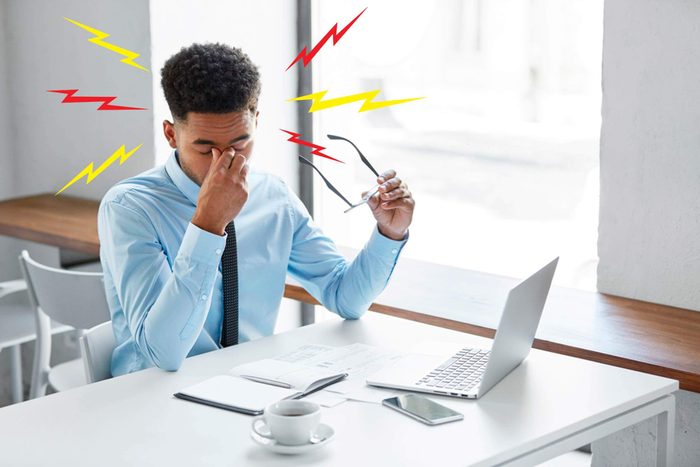
The phases of a migraine
Although the experience can vary from one person to the next, migraines tend to involve four phases: The prodrome phase, which lasts 24-72 hours, has many distinct symptoms that don’t include head pain; the aura phase (flashing lights or stars); the actual headache, and finally the postdrome phase, or migraine hangover. “Prodromal symptoms can vary from patient to patient, and even from migraine attack to migraine attack for the same patient,” Dr. Hutchinson points out, adding that some people may not experience all phases. (Find out which type of migraine you have.)
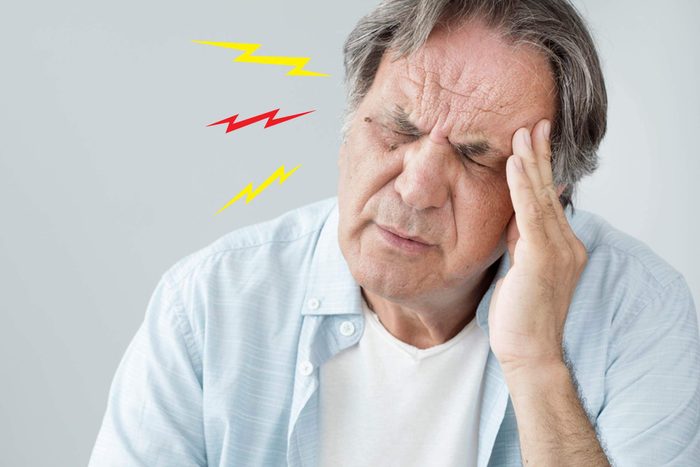
Be wary
What brain changes are thought to cause a migraine? Simply put, an external trigger (like a change in barometric pressure) or internal trigger (like the estrogen drop of menstruation) sparks a release of neuro-inflammatory compounds known as peptides; these sensitize and inflame blood vessels in the brain. “Think about it as an inflammatory cascade that moves from the lower brain centers to the higher brain centers,” says Dr. Hutchinson. “You could get to a point where the attack has progressed so much, it’s hard to turn around.” That’s why it’s so important to anticipate triggers so you can treat it before the real pain kicks in, which also happens to be when treatments are most effective. “My patients who recognize prodromal symptoms are better off because they can be proactive,” she says. (Here are 15 migraine triggers you should know about.)

Watch for food cravings
The prodrome phase—also called the premonitory phase—could involve yawning, mood changes, nausea, light and sound sensitivity, and neck pain. “Functional brain scans performed during this phase show activation of different brain regions corresponding with different symptoms,” says neurology professor Andrew Charles, MD, director of the UCLA Goldberg Migraine Program, and member of the American Headache Society board of directors. For example, activation of the hypothalamus, a small region deep in the brain that is involved in the regulation of appetite, sleep, and metabolism, could play a part in the prodrome symptom of food cravings.
Dr. Hutchinson says food cravings—especially for chocolate—is the top prodromal symptom her patients report. “Many women say, ‘I think chocolate causes my migraine.’ But we’ve found that chocolate is not a trigger. It’s more that the headache process has already started, and as part of that initial phase, they’re craving chocolate.” (Steer clear of these 12 foods that can make headaches worse.)
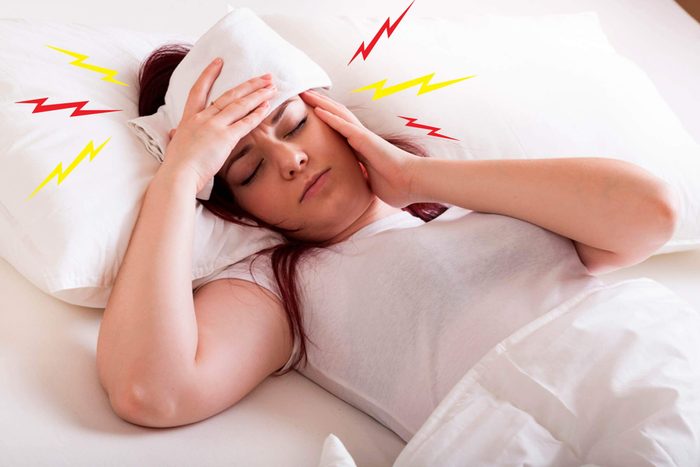
Feel sleepy?
The activation of the brain’s hypothalamus region also may play a part in the sleep difficulties some patients experience, according to Dr. Charles. In a 2016 study published by The Journal of Headache and Pain, excessive daytime sleepiness was linked to an exacerbation of migraine symptoms.
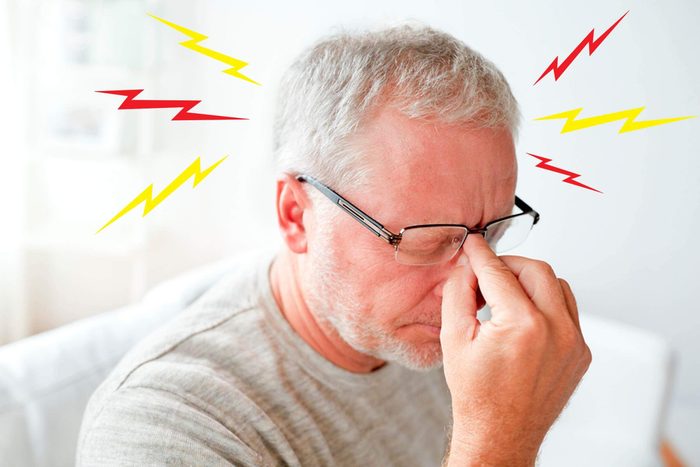
Neck pain
Neck pain is a common prodromal symptom, says Dr. Charles. And, it seems related to migraines due to the nerve impulses that go back and forth between the lower part of the brainstem and upper spinal cord, he explains.

Upset stomach
In patients who have nausea, brain scans reveal activity at the base of the brain where the queasy sensations originate, says Dr. Charles. What’s more, migraines may be genetically linked to irritable bowel syndrome (IBS), according to a 2016 study published in the journal Neurology. (Here are 12 other things migraines can hurt besides your head.)

Light sensitivity
While light sensitivity can signal other eye problems, it is also a symptom of the prodrome phase. It may be caused by the activation of the occipital cortex, which is the region at the back of the brain that processes vision, explains Dr. Charles.
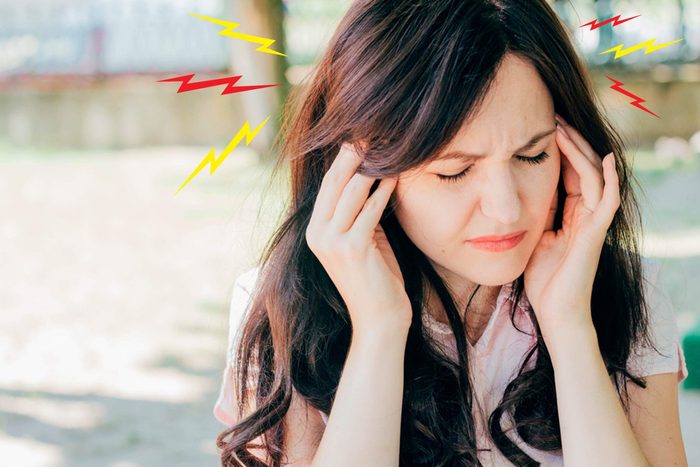
Stroke-like symptoms
Patients who experience the aura phase may have symptoms that seem like a stroke, says Dr. Hutchinson. “It’s during the aura that you might get numbness on one side of your body or notice spots in front of your eyes.” Patients may also experience other visual disturbances—such as flashing lights or shimmering lines—as well as tingling sensations, difficulty speaking, or dizziness, says Dr. Charles, explaining such symptoms are caused by slowly spreading waves of abnormal activity that cross the surface of the brain, usually beginning in the part of the brain that processes vision, the occipital cortex.

Activate your treatment plan
New research into the brain mechanisms behind migraines has led to a number of new treatments that not only minimize the attack but prevent it altogether. “It’s a pretty exciting time in the headache world,” Dr. Hutchinson says. The key is to have your doctor help you establish a treatment plan ahead of time and to recognize the warning signs that should prompt you to activate it. “Your plan might vary from attack to attack depending on what you think the trigger is,” Dr. Hutchinson explains. “If you’re at your sensitive time in your menstrual cycle, for example, your approach might be different than if your headache was brought on by stress or lack of sleep.”
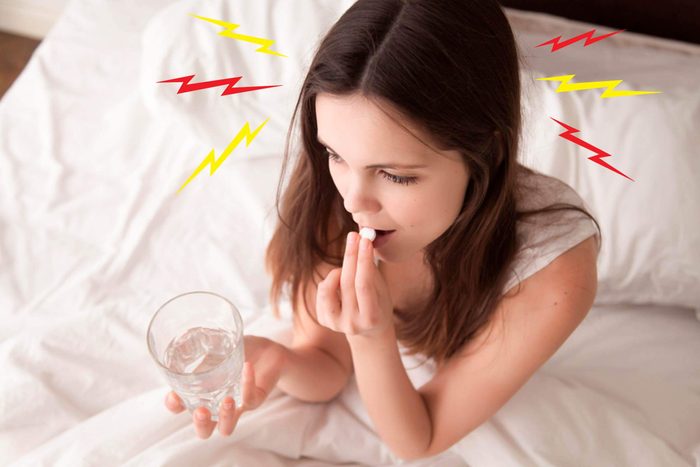
Take advantage of new meds
People who experience migraine have lots of treatment options. For patients who need to relieve the pain of an attack that’s already begun, there are a number of good prescription drugs available, including triptans, which work by constricting blood vessels in the affected area of the brain and inhibiting the release of neuroinflammatory peptides. Anti-inflammatory medications such as naproxen and ibuprofen can also be helpful, says Dr. Hutchinson. Patients who experience frequent attacks may take a regular, preventive prescription to keep the migraine process from starting in the first place.
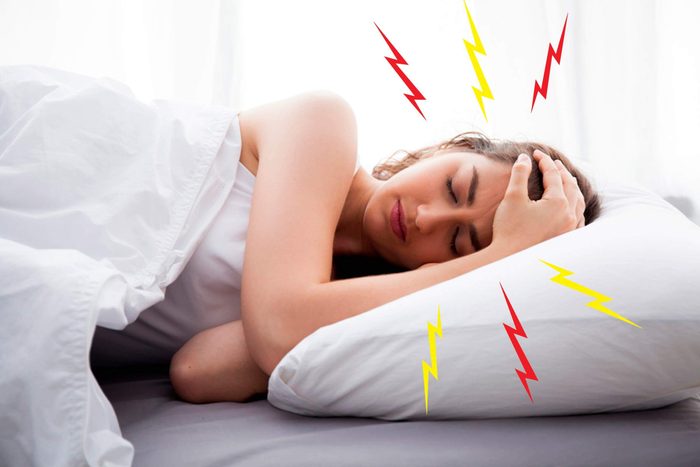
Beyond drugs
Therapies you could use in combination with your medications include MigraineX, a specially designed earplug you insert when symptoms start. It can limit a migraine triggered by weather-related pressure changes. Home or natural remedies may also help. “Maybe one person needs to get in a dark room and lay down with an ice pack,” says Dr. Hutchinson. “Somebody else might need to eat something if a skipped meal triggered their attack.” (Here are the best CBD hemp oils for migraines that come expert-approved.)

Keep pushing for treatments that work
If your plan isn’t doing the trick, try another approach—or even another doctor—until you find a strategy that eases your pain. “Years ago people had to go home from work because their migraines were so debilitating,” says Dr. Hutchinson. “But today there are so many more options. If you get your treatment on board as soon as symptoms start, it’s possible to return to full activity and not feel like you’re missing out on life.”
Next up: Here are the 15 signs that your headache could be something much worse.
